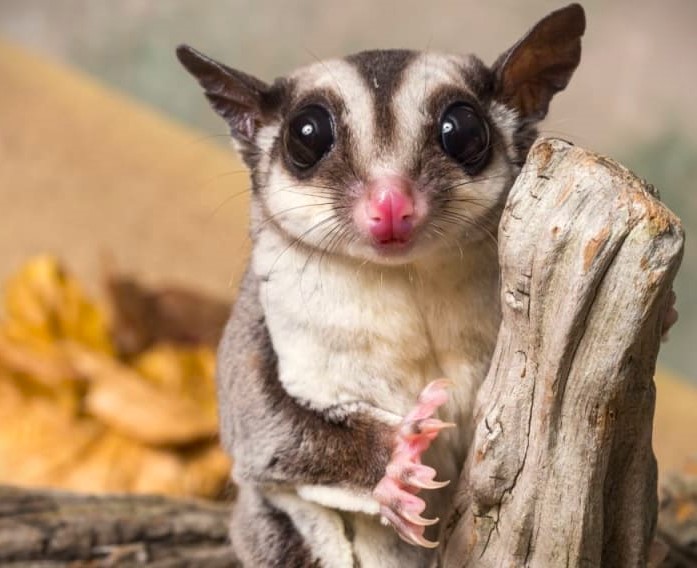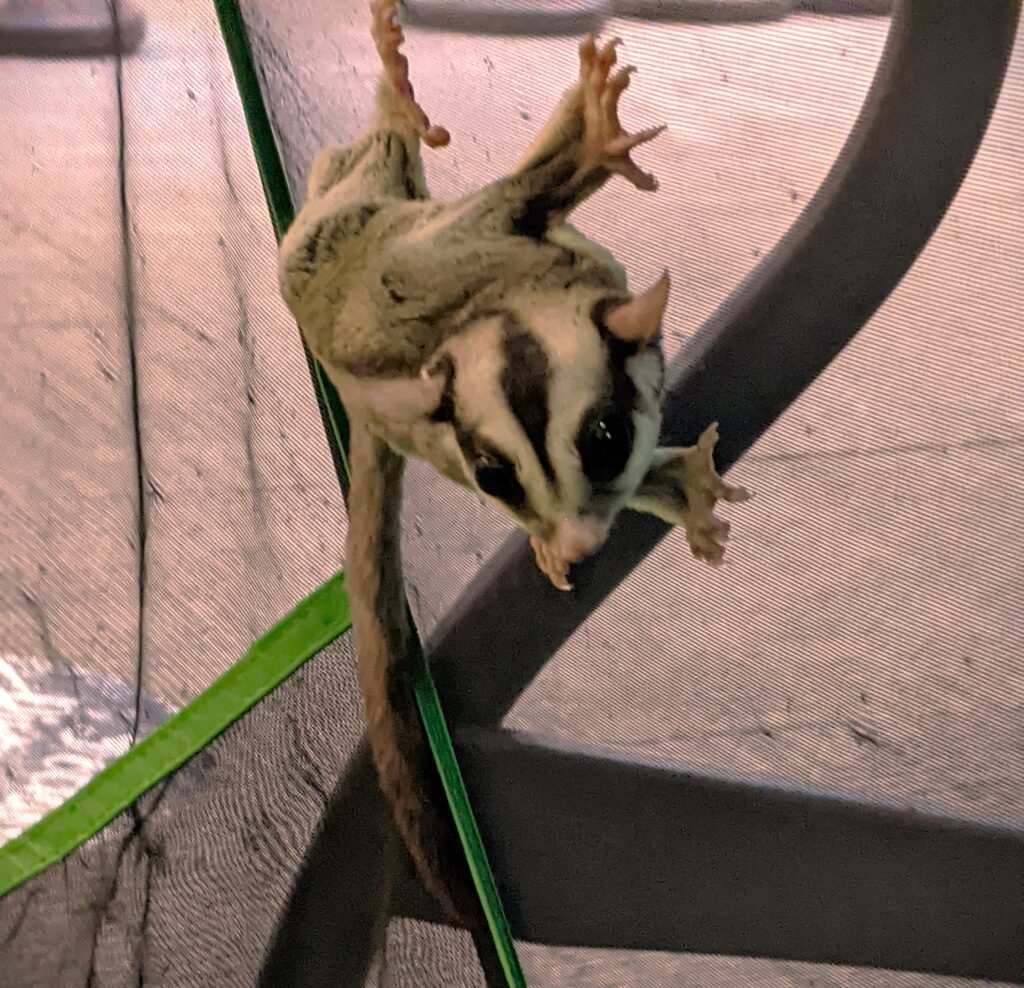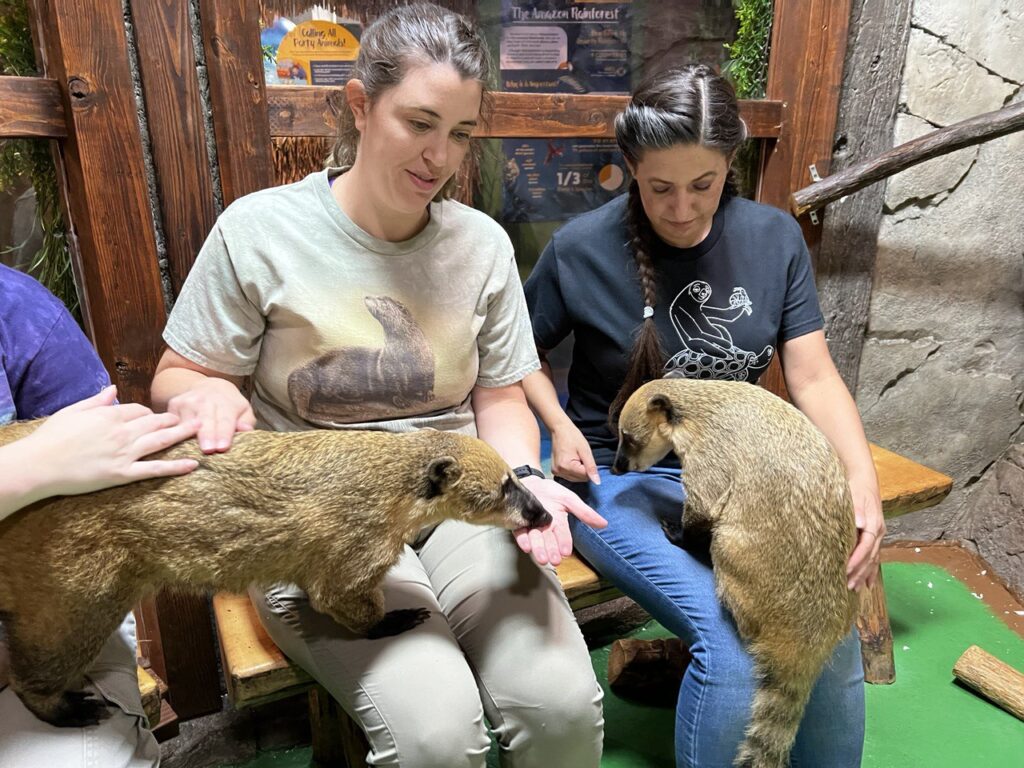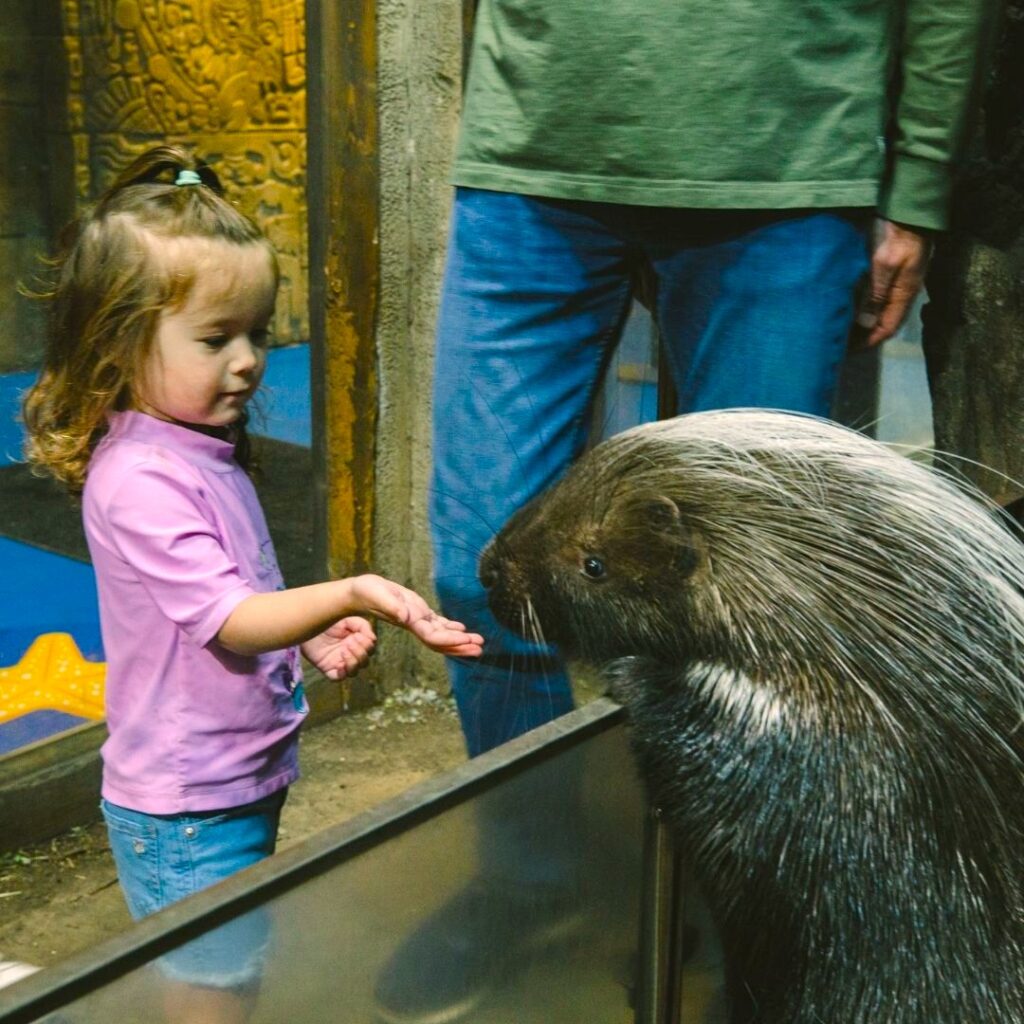How Are Sugar Gliders at SeaQuest Cared For?
Share it on:
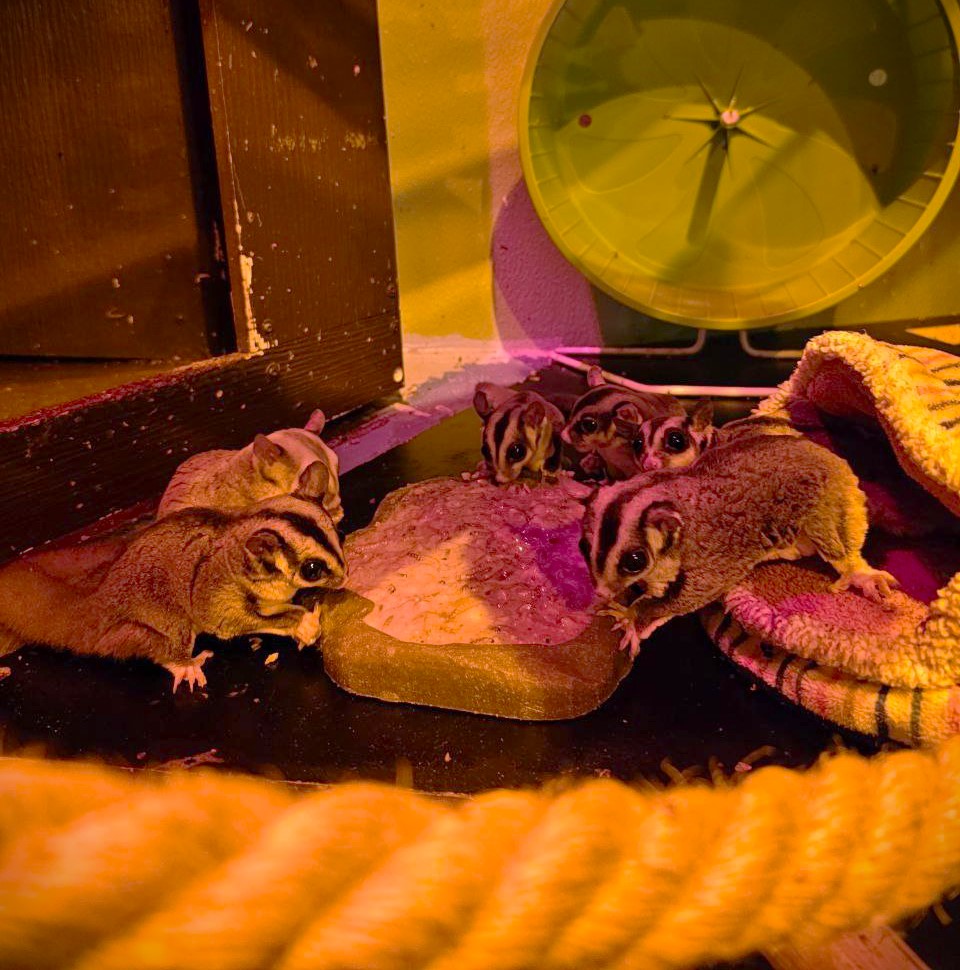
At the heart of interactive aquarium experiences like SeaQuest lies a commitment to the well-being and care of a diverse range of animals. Sugar gliders, small marsupials native to Australia, have captured visitors’ fascination with their distinctive gliding abilities and endearing personalities.
Understanding the intricate needs of sugar gliders is essential for their well-being in captivity. These animals require social interaction, a nutritional diet, and physical activity to mimic their lives in the wild. SeaQuest’s approach to caring for sugar gliders involves comprehensive health monitoring, species-specific dietary programs, and enrichment activities designed to promote natural behaviors. Learn more about how SeaQuest keeps our sugar gliders happy and healthy.

Use Code BLOG25 for 25% OFF Any Admission Ticket
Sugar Glider Care at SeaQuest
SeaQuest takes great care to provide a safe and loving environment for sugar gliders, ensuring their habitats closely mimic their natural Australian forests. This includes everything from the right temperature and humidity to trees they can climb and glide. Each detail is carefully managed to give these small marsupials a space that feels like home.
Because sugar gliders require specialized care, we retain a team of experts in the health and behavior of exotic small mammals. This team includes vets who know how to treat marsupials and caregivers who meet the daily needs of sugar gliders with great care and knowledge. They ensure the sugar gliders eat a balanced diet and stay healthy, helping prevent common health issues. The team is also committed to ethical care, focusing on keeping the sugar gliders well and educating visitors about them.
What Is a Sugar Glider’s Natural Habitat?
Sugar gliders are arboreal and nocturnal animals, which means they live in trees and sleep during the day. Sugar gliders thrive in the canopies of Australian forests. In the wild, they glide from tree to tree using the membrane between their limbs, searching for food primarily at night. SeaQuest has designed habitats with ample vertical space for climbing and gliding to mirror these natural conditions. These environments include branches and other structures that encourage natural movements and behaviors. Additionally, the habitats are equipped with materials that promote exploration and play, catering to the physical and mental well-being of the sugar gliders.
Social Behavior and Group Dynamics of Sugar Gliders
Social interaction is crucial for sugar gliders living in family groups or colonies. SeaQuest emphasizes group housing to provide essential social contact among the gliders. The staff closely monitors these groups, ensuring all individuals integrate well and meet their companionship needs. When introducing new sugar gliders to established colonies, SeaQuest employs careful strategies to facilitate acceptance and minimize stress, helping maintain a stable and healthy group dynamic.
What Do Sugar Gliders Eat?
In the wild, sugar gliders have an omnivorous diet consisting of fruits, vegetables, and protein sources like insects and spiders. SeaQuest’s feeding regimen is carefully designed to replicate these natural dietary patterns. The diet provided is well-balanced, ensuring that all nutritional needs are met. We conduct regular nutritional assessments to tailor diets to individual health needs and life stages, optimizing the overall well-being of each sugar glider under SeaQuest’s care. This meticulous attention to diet underscores SeaQuest’s commitment to replicating a natural lifestyle for sugar gliders, supporting their health and longevity.
The Health and Well-being of Sugar Gliders
As responsible stewards of wildlife, SeaQuest ensures that sugar gliders have the best possible living conditions and medical care. Here’s how.
Creating Optimal Living Conditions for Sugar Gliders at SeaQuest
SeaQuest is dedicated to replicating the natural living conditions of sugar gliders to ensure their health and comfort. This includes maintaining a controlled environment and simulating nocturnal cycles, which are crucial for supporting their sleep patterns. The habitats provide a clean and safe living space that prevents diseases and minimizes stress among the sugar gliders. We also regularly update their habitats to make them more comfortable and enriching. These improvements include updating climbing structures, introducing new toys, and varying the layout to keep the environment engaging for the sugar gliders.
Veterinary Care and Health Monitoring for Sugar Gliders
Our sugar gliders are continuously seen by veterinarians specializing in exotic small mammals. These experts conduct routine health checks to ensure each sugar glider is thriving. We have immediate care strategies to address common health issues such as dietary imbalances or stress-related conditions. Furthermore, ongoing health monitoring allows the veterinary team to adjust care practices as necessary, tailoring interventions to meet the specific needs of each sugar glider. This proactive approach to veterinary care ensures that sugar gliders at SeaQuest maintain optimal health and well-being.
Educational and Conservation Initiatives
While our first goal is to provide sugar gliders with a great home, we also want to educate the public about these adorable creatures. We take active steps to contribute to the conservation of gliders everywhere.
SeaQuest’s Role in Sugar Glider Education
Through engaging programs and interactive experiences, SeaQuest visitors are offered a deep dive into the world of these fascinating marsupials. These educational sessions are designed to inform and foster a greater appreciation and understanding of sugar gliders, encouraging visitors to value and respect these creatures. Additionally, SeaQuest integrates conservation messaging into our presentations, emphasizing the importance of habitat preservation and ethical wildlife care.
Encouraging Responsible Sugar Glider Ownership
Recognizing the complexity of sugar glider care, SeaQuest is committed to providing potential and current owners with comprehensive resources and best practices for sugar glider ownership. Furthermore, SeaQuest advocates for ethical breeding practices and encourages the adoption of sugar gliders from rescues, aiming to reduce the number of animals needing a loving home. Through these efforts, SeaQuest enhances the lives of sugar gliders in captivity and educates the public on the responsibilities involved in their care.
SeaQuest’s comprehensive approach to the care, education, and conservation of sugar gliders sets a high standard for animal welfare in captivity. SeaQuest ensures these charming marsupials thrive by meticulously replicating their natural habitats, providing expert veterinary care, and fostering enriching social environments. We improve the lives of sugar gliders and equip visitors and potential pet owners with the knowledge and resources to make informed, ethical decisions regarding wildlife and pet care.
SeaQuest is responsible for preserving our wildlife’s biodiversity by providing compassionate care to these creatures and teaching others about them. This way, opossums will continue to venture into their ecosystems for generations.


